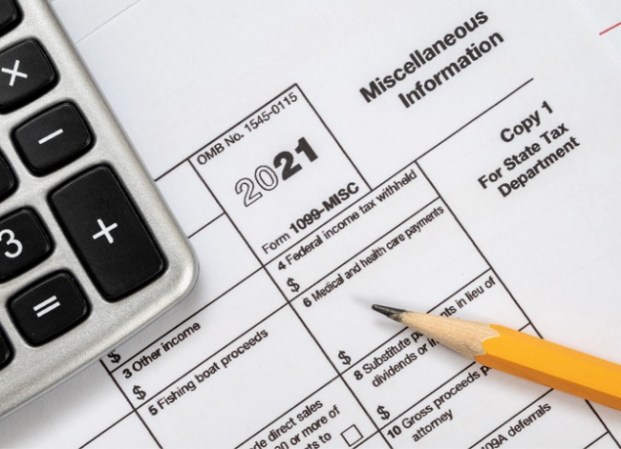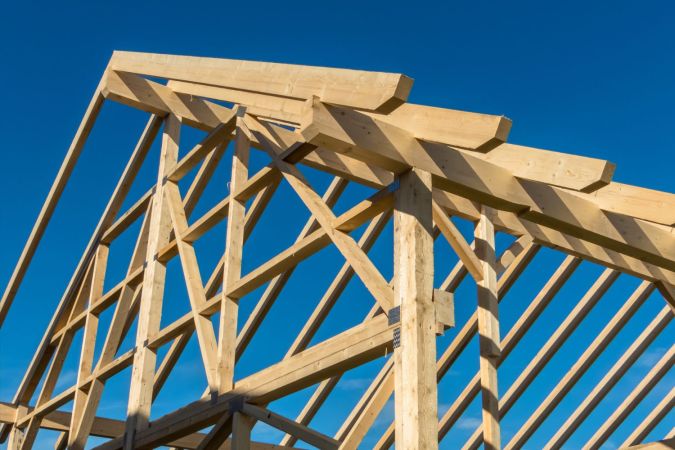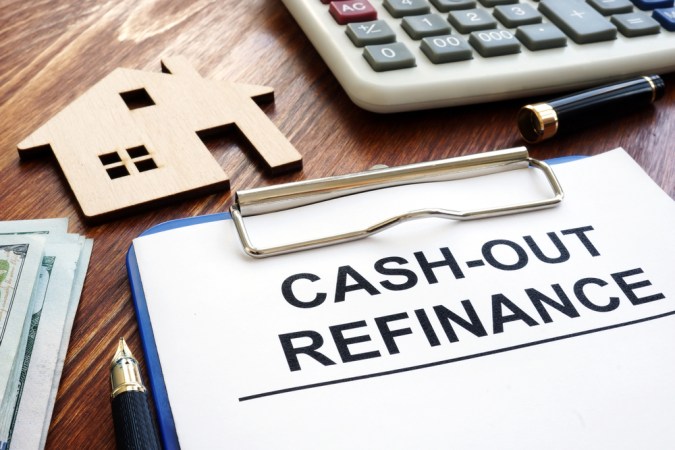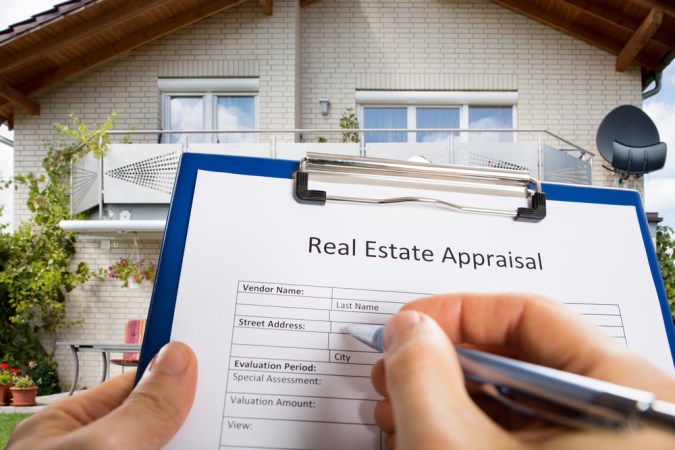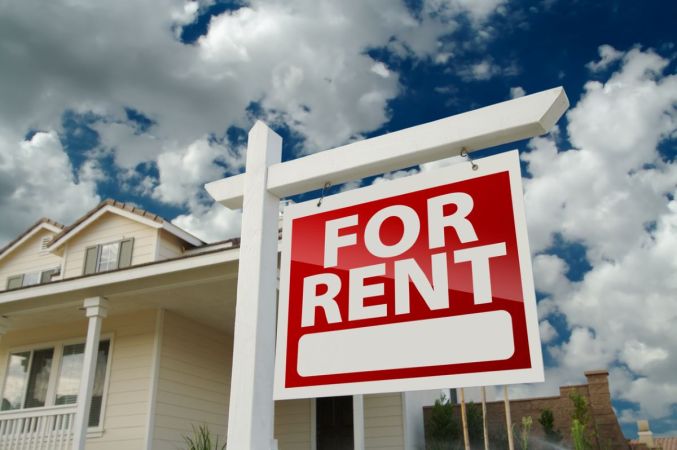We may earn revenue from the products available on this page and participate in affiliate programs. Learn More ›
Q: We have decided to renovate our home to make it into our dream house rather than move, but it will be a pricey renovation. Can we use the equity we’ve built to cover that cost, and if so, how does a home equity loan work?
A: You can! Having put in the hard work and discipline to build equity in a home is a great feeling, and while getting that much closer to paying off the mortgage is exciting, it also means that you have access to a pool of funds to borrow from to finance your renovation at a great rate. It can also be used to finance non-home-related expenses, such as a child’s college education, medical bills, and other large expenses. Alternatively, equity can serve as a kind of emergency fund, rather than keeping a credit card open for that purpose. A home equity loan is one of the most common ways to get equity out of a home. So what is a home equity loan, and how does a home equity loan work? Essentially, homeowners can apply for a loan using the difference between their home’s value and the amount they still owe on their mortgage as collateral, and then borrow against it. The rates are usually lower than those on other kinds of personal loans, and you can pay yourself back over time. A home equity loan can be taken as a lump sum, with a homeowner making regular monthly payments until the loan is repaid, or the funds can be taken in the form of a home equity line of credit. In this scenario, a homeowner only draws on the funds when and if they need them, making payments on the money they’ve actually used and not on the entire amount of the loan.
Home equity is the portion of your home you “own”—essentially, the amount of your mortgage you’ve paid off.

When a buyer purchases a home, they don’t really “own” the home until they’ve paid off their mortgage. Presumably they put down some money as a down payment. When they sign their mortgage papers and take the key to their new house, they own exactly the percentage of the home reflected in the amount of money they put down—unless they default on their mortgage, in which case the bank will likely reclaim that down payment to cover its losses. As they pay down their mortgage each month, however, the percentage of their home that they have actually paid for will increase, slowly at first, and then faster as they advance through the years of mortgage payments and start paying more principal and less interest. Each payment buys them a little more of their home.
The percentage of the home that has already been paid for is called equity. This is the pool of money that a home equity loan allows homeowners to borrow from. Sometimes referred to as a “second mortgage,” this kind of loan allows homeowners to borrow money against the portion of their home that they own. The remainder of the home is still owned by the lender of their “first” or primary mortgage. If the borrower defaults, the main mortgage will be paid off first, and the home equity loan will be paid off second.
One of the most obvious ways to build up equity is to consistently make monthly mortgage payments, which add up toward paying off the home. But this process can take many years, and if a homeowner anticipates dipping into these funds for a future need such as tuition or a remodel, there are a few ways to speed up the process. One is to make a large down payment on the home—a payment of 20 percent or more will eliminate the need for private mortgage insurance (a type of insurance that covers the lender if the borrower defaults on the loan) and will also mean a homeowner has a higher amount of equity from the start. Another option, if financial circumstances allow, is for the homeowner to make additional monthly payments toward the principal. It may even be a good idea to refinance and change the loan term to a shorter period. While this means having a higher monthly mortgage payment, it comes with the benefit of reduced interest rates and faster equity building.
Equity is also affected by the current appraised value of the home. If a homeowner has faithfully been paying their mortgage for 15 years, it’s possible that the value of their home has gone up (or down) significantly since it was purchased. An appraiser can determine the market value of the home; that value is influenced by current market conditions and has a bearing on how much equity a homeowner has. For example, say a buyer takes out a mortgage of $200,000 on a home with a value of $225,000. The homeowner has been paying for a number of years, and the balance left on the mortgage is $150,000. Based on the purchase price, they have $75,000 in equity: the difference between the $225,000 value and the $150,000 they still owe. But perhaps the real estate market in their area is hot and houses are in high demand. If an appraiser says that the current value of the home has grown to $300,000, the homeowner’s equity is now $150,000: the difference between the current market value and what they owe.
The amount of money that can be borrowed in a home equity loan is limited by the amount of equity the homeowner has built in their home. The appraised value minus the amount still owed on the first mortgage is the amount of equity they have in their home: that’s the pool of money that the home equity loan will be drawn from.

Your home equity can be converted into a loan to fund almost anything from home improvements to a child’s college education.
Unlike some kinds of loans, money borrowed from equity is not limited to specific purposes, nor will borrowers have to account for what they spend it on. If they have a backup of bills after a long illness or temporarily reduced income, they can use the money to pay off debts and make one monthly payment (likely at a much lower rate) instead of keeping track of a large stack of bills. Medical expenses, wedding costs, college tuition, and room and board payments are fair game, as are payments to contractors, supplies, and the costs of temporary housing during a home renovation. The funds can even be used to pay for a long-awaited vacation. Home equity loan rates are usually quite favorable compared to those of other personal loans, because at least a portion of the mortgage has already been successfully paid down and the home itself can be used as collateral. Homeowners will want to keep in mind that the loan still has to be paid back—regardless of what the money was spent on—and that if they can’t pay it back, they’ll stand to lose their home.
A home equity loan can be understood as a type of second mortgage. As with a first mortgage, the home will serve as collateral in the event the borrower defaults on the loan. Lenders will require documentation such as the homeowner’s pay stubs and credit history in order to determine if they qualify for the second mortgage. If the homeowner defaults on the loan and the home is foreclosed, the original mortgage will be paid off first from the sale of the home, and the home equity loan, or second mortgage, will be paid with whatever proceeds are left. This means that home equity loan lenders take a higher risk because it is not guaranteed that they will be paid back in full.
To get a home equity loan, you must build up equity first.
For homeowners wondering how to get a home equity loan, it may not come as a surprise that the first step is to build up equity. During a home purchase, the buyer makes a down payment and takes out a mortgage loan. When a monthly mortgage payment is made, the money goes in several directions. Some goes to an escrow account from which the mortgage company pays the local property taxes and homeowners insurance premium, some goes toward the interest owed on the mortgage, and some goes toward the principal balance on the loan. In the early days of a mortgage, many homeowners are distressed to see what a small percentage of their monthly payment actually goes toward paying down the principal. Mortgages are amortized, which means there’s a formula that breaks down this amount. At the beginning of the repayment period, a much larger percentage of the payment is applied to the interest than to the principal. As time goes by, this ratio begins to shift, so that near the end of the mortgage the payment is almost exclusively applied to the principal. This is so that the lender makes sure they get their cut of interest on the risk they took in lending to the borrower; if they apply the whole payment to the principal and the borrower chooses to refinance or pay off the mortgage early, the lender won’t collect as much interest. Amortizing the loan so that the front-end payments are interest-heavy protects the lender.
Unfortunately, what it also means is that it can take a while for homeowners to build up equity. If a homeowner puts down a lump sum of cash upon closing on their home, they immediately have equity in that amount. That money buys a “piece” of the home that the bank doesn’t own. But the equity that is built by making regular monthly payments can take some time to accrue. Over time, a homeowner can build equity faster (and, at the end of their mortgage, save some money in interest) by paying extra money on the mortgage payment and asking that it be applied to the principal. Not all loans permit this early or extra payment, but when a homeowner has a little extra cash on hand, it can be helpful if the lender does allow this.
In order for a homeowner to take out a home equity loan or line of credit loan, most lenders will require that the homeowner have at least 15 to 20 percent equity, meaning that their mortgage balance is equal to or less than 80 to 85 percent of their home’s appraised value. If a homeowner doesn’t have at least that much equity, most lenders feel that additional debt will leave them dangerously over-leveraged, and that with the fees and costs associated with closing the loan, the homeowner may end up with very little actual cash available in their loan.

A simple calculation can help you determine how much you can borrow.
Financial experts advise that the homeowner’s total home debt, or the amount that they owe on their home including the original mortgage plus any home equity loan or HELOC (home equity line of credit), should not equal more than 85 percent of the value of the home. If it’s been a while since the home was appraised, an appraisal can be a good first step for homeowners to take; the home’s value may well have changed since it was first purchased, and the new value of the home may come as a pleasant surprise. To determine the maximum amount of debt banks will generally allow to be taken against the house, homeowners can multiply the home’s value by .85 and subtract the amount that is still owed on the mortgage or any other home loans. The resulting number is the amount a homeowner can request to borrow through a home equity loan. There are a number of home equity calculators available online that can provide a rough idea of how much equity a homeowner has, but for precise numbers they’ll need a current appraisal.
A word of caution, however, on automatically taking the maximum amount: The home is the collateral for this new loan and for the mortgage. Leveraging 85 percent of that value into money that needs to be paid back can be a risk, as rates, values, and finances can rapidly change with the market. Maximizing the home’s value in a loan means that a shift in the real estate market could leave a homeowner owing more than their home is worth, and a lost job could mean missed payments that allow the bank to foreclose on the home and leave the homeowner with no equity at all. This calculation will tell homeowners the amount it will be possible for them to borrow, but it’s up to each individual homeowner to consider their finances and savings and decide how much they can really afford to borrow.
A home equity loan has a set term and a fixed interest rate, although borrowers will likely need to pay closing costs.
Terms for a home equity loan can range anywhere from 5 to 30 years depending on the needs of the borrower and what the lender will allow. Homeowners who are borrowing only a small sum may opt for a shorter term to keep the amount paid in interest low. Others prefer to treat the loan like a mortgage and choose a longer period, making extra payments toward the principal when they can. A major perk of home equity loans is that they come with fixed interest rates. This means that the borrower’s monthly payments will stay the same for the entire life of the loan, which can be a huge benefit to borrowers because unlike the interest rates on a personal loan or credit card, current home equity loan rates tend to be relatively low.
Another factor to keep in mind is that there are often closing costs associated with acquiring a home equity loan. These fees may cover anything from appraisals to attorneys’ costs, and they range between 2 percent and 5 percent of the total amount of the loan. This may not sound like much, but if the loan amount is $80,000, for example, closing costs could be as high as $4,000.
It’s a good idea for homeowners to make use of a home equity loan calculator to make sure that these fees do not outweigh the benefits of a low interest rate.
To get approved for a home equity loan, borrowers must meet certain requirements.
Just like when applying for a mortgage, borrowers applying for a home equity loan need to demonstrate to their lender that they’re a good financial risk to take. This involves following nearly the same process as taking out a first mortgage. First, they’ll need to check up on their credit score and correct any errors in the report. Their FICO score will need to be at least 620 according to most home equity loan requirements, and even higher for optimal rates.
After homeowners acquire their credit report, it will be possible for them to calculate their debt-to-income ratio. This is the amount of money owed toward debt payments each month compared to the amount of money the homeowner earns each month. The percentage that goes toward debt payments should not be more than 43 percent of their income. If the current percentage is more than 43, it’s advisable for homeowners to work toward paying off some of that debt before applying for a home equity loan. Lenders want to make sure that borrowers don’t overextend themselves and default on the money they borrowed, because it’s expensive for a lender to foreclose on a home to recoup its loss. Lenders would prefer to continue receiving regular payments with interest, so they’ll want to make sure the homeowner can really afford to borrow.
Borrowers will need to produce documentation of their income and assets in order to apply for a home equity loan as well. Tax forms, pay stubs, bank statements, and current mortgage statements are all documents that a lender can reasonably request in order to loan a homeowner money. These documents can also result in a more affordable interest rate on the loan, as lenders can offer better rates to more qualified borrowers who can document their financial situation.
A home equity loan is not the same as a HELOC, or a home equity line of credit.
Both a home equity loan and a home equity line of credit, or HELOC, are borrowed from the pool of equity that borrowers have built in their home. But there’s a substantive difference between the two. In a home equity loan, borrowers request a specific amount of their equity as a loan. The loan is disbursed in one sum, to be deposited into the borrower’s bank account and spent as needed. Payments begin immediately on the full amount borrowed until it is paid off. Terms vary, but there’s a set number of months required for the payoff, and occasionally a larger balloon payment at the end of the term.
When it comes to a HELOC vs. a home equity loan, a HELOC works differently in a few ways. The borrower requests that a certain amount of their equity be made available to them. If the request is approved, that money becomes available to them, but it is not immediately disbursed—it sits there in an account until the borrower withdraws some of it, and it operates as a line of credit. Therefore, no real payments are required immediately, because until a withdrawal is made, the borrower technically hasn’t received any of the funds. These accounts will have a specific limit on how often and for how long the borrower can withdraw money and may include an annual maintenance fee or transaction fee when money is withdrawn. After money is withdrawn, the borrower will begin making payments over a set period of time, but only on the money that has been withdrawn and not on the full amount of the available equity. These loans can be quite useful when a homeowner will need money at various points over a long period of time. For example, if a homeowner is planning to pay for college tuition with a HELOC, they can request a line of credit in the total amount they’ll need. As each semester’s payment comes due, they can withdraw that amount from the account to pay the bill (usually at a much better rate than a private education loan) and then begin repayment only on that amount. This makes it possible to space out the repayment gradually over time, rather than making large payments on the total amount right from the start. It’s worth shopping and comparing the terms offered by the best HELOC lenders to determine which is the best fit.

There are pros and cons to getting a home equity loan.
There are many advantages of a home equity loan: They are offered at rates lower than other personal loans, they may be easier to secure than other personal loans, and they simplify repayment of other debt into one consolidated amount. The size of a home equity loan is only limited by how much equity the borrower has. When a homeowner is considering a personal loan or a cash-out refinance vs. a home equity loan, the amount that is able to be borrowed is significantly larger with the latter. Another huge asset of a home equity loan is the tax benefits for home improvement: Borrowers can deduct their interest paid if the loan was used for the renovation. But there are several things for homeowners to know before taking out a home equity loan that may not be immediately apparent.
Borrowers who are taking a home equity loan to do home improvements will have additional things to take into consideration. It’s exciting to upgrade a home and choose some special elements that make it truly unique. Most homeowners expect to see an increase in the overall value of the home as a result of the improvements and upgrades, and this is almost always the case. It’s key to consider the average value of homes in the area while making these calculations, however. Believe it or not, it’s possible to “over-improve” a home for the market to a point where the real value of the home is much higher than buyers will pay to live in the neighborhood. In that case, borrowers won’t get the return on their investment. This might not seem like a big deal, especially if they’re improving with the intent of remaining in the home for several decades and want it to suit their own lifestyle rather than someone else’s idea of value. However, they may find themselves in a bind if their life circumstances change and they need to sell the home unexpectedly. When a homeowner sells a home with a mortgage and a home equity loan, usually the payoff of the mortgage is wrapped into the home sale, and that can also be the case with a home equity loan—unless they owe more on the home equity loan than the sale price will cover. Lenders will not approve mortgages for more than the home is worth on the market, so that could leave sellers stuck trying to come up with the money to pay off their home equity loan in order to sell the house. Homeowners will want to carefully consider the value of their home balanced against how much debt they have riding against it so that they don’t over-improve their home.
Another consideration is the fees and costs that come along with home equity loans and HELOCs. Homeowners who are processing their home equity loan through the same lender that holds their first mortgage may find that some of the fees are reduced, and some banks offer low- or no-fee home equity loan processing. Most home equity loans, however, are treated the same way as a mortgage application, because the house is the collateral for the loan and the lender has to make sure it can collect that collateral in the event that the borrower defaults. Borrowers are often expected to pay an application fee, title search fee, appraisal fee, and potentially other filing fees, plus they may need to pay attorneys’ fees and other assorted closing costs. These can really mount up quickly, and especially if the loan will be relatively small, the costs may negate the value of the loan itself.
Finally, it’s key for homeowners to remember that taking out a home equity loan is adding what is essentially a second mortgage payment on top of the current one. This may absolutely be easier than keeping track of and paying a stack of smaller bills each month. It’s true that if a homeowner has bad credit a home equity loan may not be an option, and a lender will prevent the homeowner from borrowing more than it thinks they’ll be able to afford. But here’s the thing: If a homeowner unexpectedly falls on hard financial times and has trouble paying their bills, being late on that stack of smaller bills will result in fines and fees, while repeatedly being late on two mortgages can cost them their home. There’s a lot at stake when borrowing heavily against a home. Homeowners will want to shop around, choose a trustworthy lender, and decide how much they need to borrow to accomplish the projects they have in mind rather than taking as much as they possibly can.
Once a homeowner has found a trustworthy lender and settled on one of the best home equity loans, they can enjoy working on their home improvement project or paying for their wedding, and celebrate the discipline it took to build enough equity to use for those purposes.




